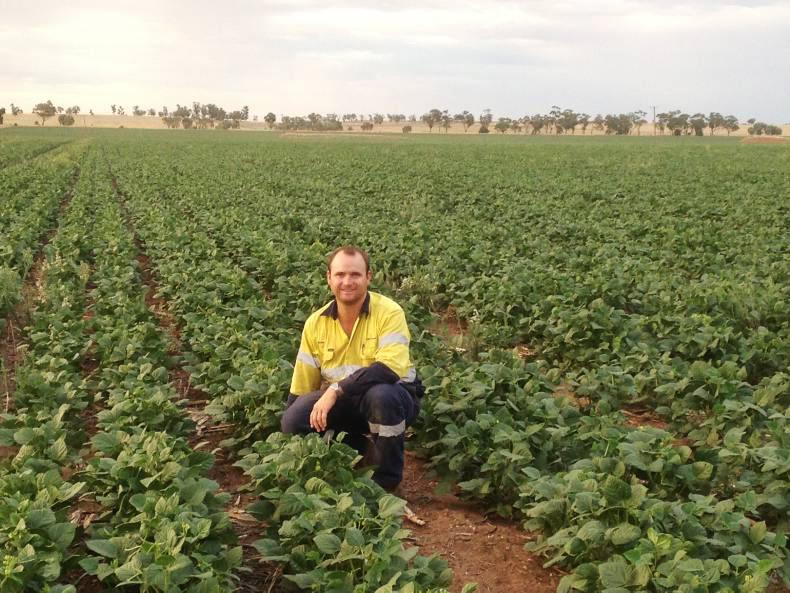It has been a very busy time for us here on the farm in New South Wales. The growing season was looking great until, yet again, our spring rains didn’t happen and October was very hot – approximately 6°C above normal – which severely affected grain fill. And that hit our harvest.
Harvest for us wrapped up pretty quickly. We had four combines in for a large percentage of it and we were again finished our winter crops before the end of November.
Unlike you guys, our big challenge is generally to make the most of whatever rain we get. Our water use efficiencies (how much grain we grow per millimetre of rainfall) have been our best on record, which is encouraging.
Barley produced over 30kg/mm rainfall and a lot of our wheat was in the 20kg to 25kg/mm range. Even our canola (oilseed rape) and faba beans were 12kg to 14kg/mm, which is an excellent result for us on our 240mm growing season rainfall (9.45in).
Prices here have declined though, given the glut of global grain. On our farm, we are back probably 10% to 20% on wheat price and 20% to 30% on barley. On the plus side, canola price increased about 10% on last year.
Current estimates suggest that Australia grew approximately 24Mt of wheat, 8Mt of barley and 2.8Mt of canola.
Fires
Australia also witnessed some large harvest fires created by lightning strikes and then fed by strong winds and temperatures in excess of 40°C.
These were in the Esperance region of Western Australia and the mid-north of South Australia. Many farmers lost standing crops, machinery and even houses. Unfortunately, there were also several lives lost trying to fight the fires.
Summer crops
We have planted all our summer crops. These included 380ha of sorghum in the middle of November when it started to rain, just before winter crop harvesting commenced, and followed that with 165ha of mungbeans.
We also planted another 260ha of mungbeans between Christmas and New Year’s Day after some more rain.
The sorghum headed out in late January and the early planted mungbeans were flowering then too, and just starting to set pod.
We have had quite a dry and hot summer thus far and are hoping this turns around soon so we can fill some grain on our summer crops.
New planter
We also purchased a new planter this year and fitted it with vacuum boxes to precision plant (ie singulate) each seed.
We have done this for both our sorghum and mungbeans and will aim to plant our canola, faba beans, lupins and field peas on 50cm spacings and singulate each seed.
On our trials in our faba beans this year, we harvested an extra 15% yield on 50cm versus 25cm row spacings, so we are encouraged to take this next step.
We also think we can bring our planting rates back, especially in canola, and hopefully achieve a more consistent stand than from the controlled spill of an air seeder.
Fertility
Lime spreading was in full swing in late January when we were also getting our biosolids spread across 600ha of our property.
This entails about 12,500t of product being spread, which we then incorporate with offset discs.
We are also executing some ex-farm grain sales and lining up our winter plant programme. We will be attending several field days and conferences over the next while as that season is upon us.
Anyway, I hope all is well in Ireland and that you are enjoying the strong beef prices which we are seeing here in Australia.
Our Eastern Market Indicator (an average of saleyard prices on the east coast of Australia) recently hit 600c/kg, which is an all-time record, so the beef farmer is very happy at the present time.






 This is a subscriber-only article
This is a subscriber-only article











SHARING OPTIONS: